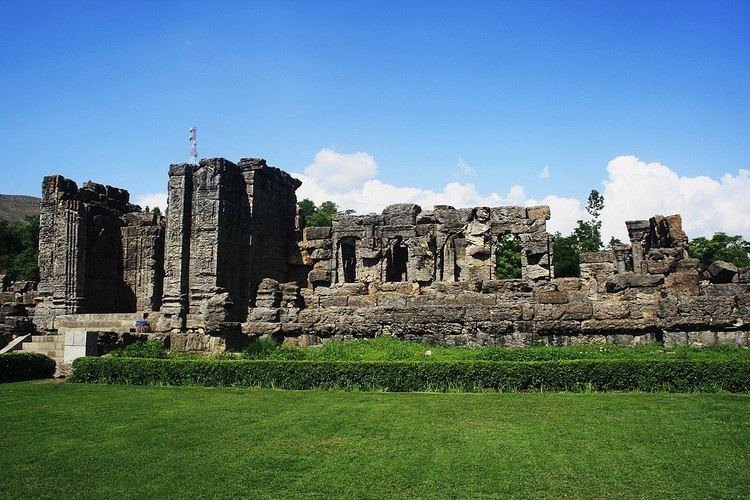 | ||
The Shah Mir Dynasty was a Muslim dynasty from the Indian subcontinent, which ruled the region of Kashmir. During the rule of this dynasty from 1339 to 1561, Islam was firmly established in Kashmir. Shah Mir, under the title of Sultan Shamas-ud-Din founded the dynasty.
Contents
As listed in the Rajataranginis he was succeeded by Jamshed 1342–1344, Alau-ud-Din 1344–1355, Shahab-ud-Din 1355–1373, Qutub-ud-Din 1373–1389, Sikandar Butshikan the book-burner 1389–1413, Alishah 1413–1419, Zain-ul-Abdin 1420–1470, Haidershah 1470–1472, Hassanshah 1472–1484, Mohammadshah 1484–1486, Fatehshah 1486–1495 Mohammadshah 1495–1496, Fatehshah 1496–1497, Mohammadshah 1497–1509, Ibrahimshah (s/o Mohammadshah) 1509 Nazukshah (s/o Fatehshah) 1529 (one year), Mohammadshah 1530–1535.
The reign of the Shah Mir Dynasty came to end in 1561, when Kashmir, like rest of the medieval Northern India was conquered by the Mughal Empire.
Origins
The dynasty was established by Shah Mir, there are two theories regarding Shah Mir's origin. Historian A. Q. Rafiqi states that some Persian chronicles of Kashmir describe Shah Mir as a descendent of the rulers of Swat. He thinks it more likely that he was a descedent of Turkish or Persian immigrants to Swat. It has also been suggested that he belonged to a Sufi or Qadiri family.
On the other hand, the 15th century Kashmiri historian Jonaraja, writing in the court of Shah Mir's descendant Budshah, states that Shah Mir came to Kashmir along with his tribe from the country of Panchagahvara (identified as the Panjgabbar valley between Rajouri and Budhal). He was said to belong to the family of an ancestor called Partha, who was described as a second Partha (an allusion to the Mahabharata hero Arjuna). Some scholars state that the Panjgabbar valley was peopled by Khasas and so ascribe a Khasa ethnicity to Shah Mir.
Most modern historians accept the Swati origins of Shah Mir. Kashmiri scholar N. K. Zutshi, having critically examined the sources, reconciles the two versions by noting that the Persian chronicles mentions Swadgir rather than Swat, which he interprets as Swadgabar, meaning "suburbs of Gabar", which coincides with Jonaraja's description of Panchagahvara-Simani (on the borders of Panchagagvara).
A. Q. Rafiqi states:
Shah Mir arrived in Kashmir in 1313 along with his family, during the reign of Suhadeva (1301–1320), whose service he entered. In subsequent years, through his tact and ability Shah Mir rose to prominence and became one of the most important personalities of his time.
Shah Mir
Shah Mir worked to establish Islam in Kashmir and was aided by his descendant rulers, specially Sikandar Butshikan. He reigned for three years and five months from 1339–42. He was the ruler of Kashmir and the founder of the Shah Mir dynasty. He was followed by his two sons who became kings in succession.
Jamshid
Sultan Shamsu'd-Din Shah was succeeded by his elder son Sultan Jamshid who ruled for a year and two months. In 1343, Sultan Jamshid suffered a defeat by his brother who ascended the throne as Sultan Alau'd-Din in 1347.
Alau'd-Din
Sultan Alau'd-Din, two sons became kings in succession, Sultan Shihabu'd-Din and Sultan Qutbu'd-Din.
Note: Muhammad Shah had five separate reigns from 1484 to 1537.
